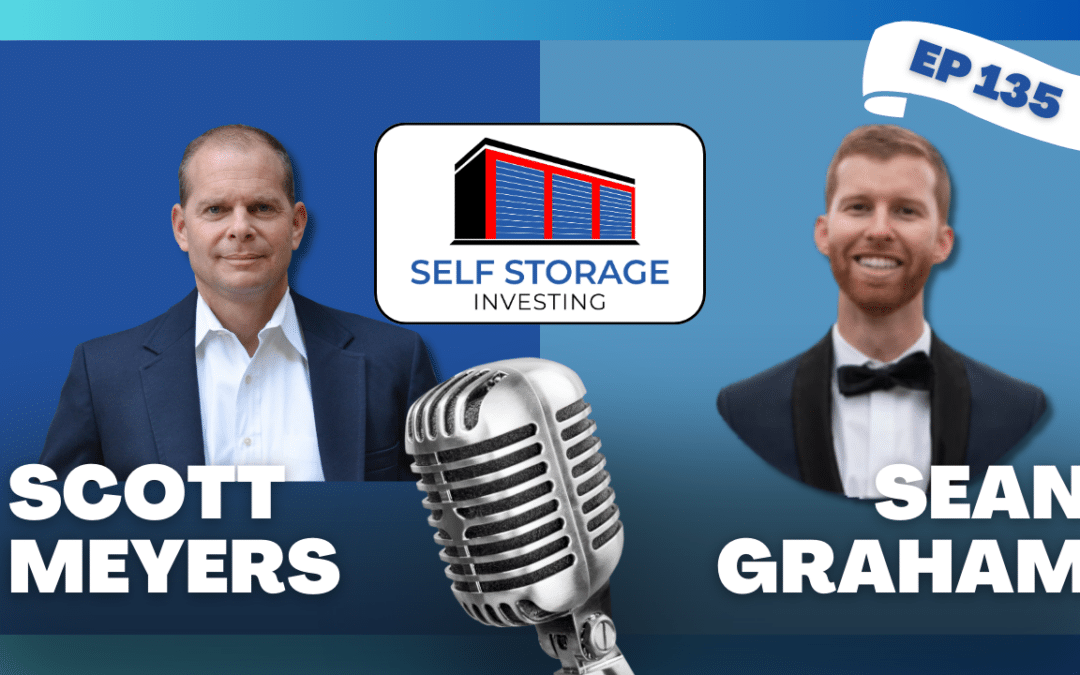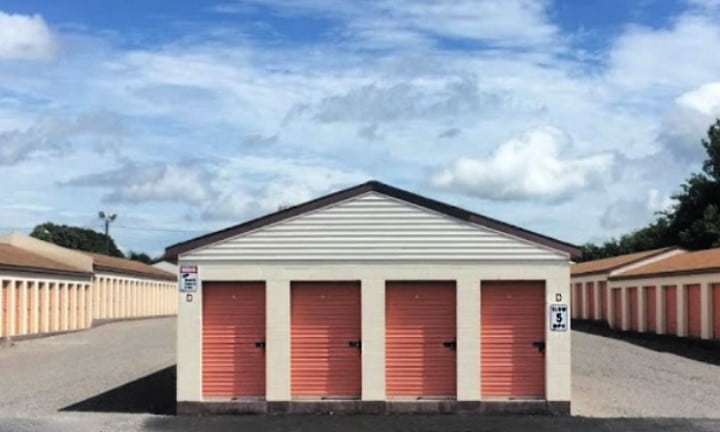The self-storage business model is refreshingly simple compared to the complexities of managing multifamily apartment complexes.
As Scott has said (and trademarked) “No tenants, No toilets, No trash.”
By offering straight-forward shed rentals the investment potential becomes easy to grasp. But trying to handle every aspect of the business alone, from raising capital to property management can be challenging.
In this episode Sean Graham shares his thoughts on finding trusted partners who excel in areas when he admits he falls a bit short.
WHAT TO LISTEN FOR
- Why Self-Storage is becoming Sean’s biggest focus
- The benefit of partnerships and syndications to leverage other people’s expertise
- Why building relationships and finding the right partners is the most effective way to scale your business
- How to identify low-value tasks and find affordable virtual assistants
ABOUT SEAN GRAHAM
Sean is the founder of Maven Equities focused mostly on mid-market opportunities in growing suburban locations with under-supplied markets. The sweet spot is ground-up development.
CONNECT WITH SEAN
- Email Sean sean@mavenequities.com
CONNECT WITH US
- Website: https://www.selfstorageinvesting.com/
- Facebook: https://www.facebook.com/selfstorageinvesting
- Twitter: https://twitter.com/SelfStorageGuy
- LinkedIn: https://www.linkedin.com/in/scottameyers/
- Youtube: https://www.youtube.com/user/SelfStorageInvesting
- Instagram: https://www.instagram.com/self_storage_investing/
Follow so you never miss a NEW episode! Leave us an honest rating and review on Apple or Spotify.
Episode Transcript
Sean Graham (00:00):
This business. At the end of the day, we’re just renting sheds simply. And so you have to keep up the properties and everything. But from an investment perspective, it’s not hard to understand. And especially when you can start showing investors how you can leverage technology, how you have the experience, how once you build a track record too at your other facilities, it’s just , people get it, they understand it, and everyone sees self-storage being developed all over.
Self Storage (00:32):
This is the self-storage podcast where we share the knowledge and skills from the industry’s leading investors, developers, and operators to help you launch and grow your self storage business. Your host, Scott Meyers, over the last 16 years has acquired, developed, converted and syndicated over 2 million square feet of self storage nationwide with the help of his incredible team at selfstorage.com, who has helped thousands of people achieve greatness in self storage.
Scott Meyers (01:05):
Hello everyone, and welcome back to the Self Storage Podcast. I am your host, Scott Meyers. And this week’s episode, our guest is Sean Graham with a Maven Equities. Now Sean is located in my home state, not too far from my hometown. He’s up in Grand Rapids where most of his projects are, as well as his home office. Me being from, yes, the Flint area, not too far away. It’s always good to have some hometown folks on the podcast. Speaking about, well, our favorite topic, which is self storage. So Sean is a master at growing, not just raising private equity, but growing a network of folks that are very connected to what he is doing. He’s done an incredible job of cultivating this community that is following along and really energized and just really interested in what he is doing and building that relationship so that they come alongside and co-invest with him in his storage facilities.
(01:57):
Our business models are very, very similar. I’ve been watching him from afar, but then also up close as I was a guest on his podcast as well. And we’ve been having several conversations with regards to the industry, the market, and where we’re at. And I felt it was, I thought it was a great idea to have Sean on our podcast and introduce him to Storage Nation over here so that we can learn a little bit more about what Sean is doing right now in today’s market and how he came to the place where he recognized also that self storage is the asset class to be investing in. So with that, Sean, welcome to the podcast.
Sean Graham (02:30):
Scott, I’m excited to be here. Thank you for the kind words. That was quite the introduction. I appreciate that.
Scott Meyers (02:37):
Well, always good to talk about, again, with folks that are interested in self storage and also some hometown folks as well. So if you would, Sean, fill in the gaps. Let us know how you got started in the business and which came first, the partnering side and working with folks in real estate, or if the self-storage side came first and then you began to grow and scale.
Sean Graham (02:56):
Yeah, so I got my CPA license out of college, went that route, went public accounting, ended up working it for a private equity back company, but really my passion wasn’t there. I was very interested in real estate. I read the Rich Dad Poor Dad, kind of went down that route. A lot of us real estate investors do. And I started house hacking. I started investing in rental properties. I’d move into a unit, rent the other units out, and that was a tough thing to do cause you’re in your twenties and all your friends are living in the cool areas. And I’m in Chicago and I’m kind of in the outskirts or in a little bit of rough, more rough areas. But overall it ended up doing very well for me. And so I still have a lot of those rental properties. And during Covid, I was actually let go for my job.
(03:44):
They decided to go in a different direction, and to me it kind of opened up this window of I knew I wanted to get in self storage at the time, and it was like, all right, I either go full all the way into it now, or I kind of slowly trickle into it. I had been doing, so during the pandemic, I just decided to fully focus on self storage. And I think the easiest way to get into self storage, at least from my perspective, is with the SBA loans. Now, it might be a little bit different now with interest rates and the way bank financing is, but that’s how I entered the market. And so at first I was excited and I thought like, okay, I could close a self storage facility in a few months, but it actually took me about 15 months to close on those first couple of transactions. And funny enough, I actually closed two transactions, two facilities with different partnerships, different owners, different sellers on the same day. But that was really the start. And those were small facilities, but I haven’t looked back from there.
Scott Meyers (04:47):
So do you still own your rental properties that you were had to have been growing at the time as well? Is that correct?
Sean Graham (04:53):
I do. I do. I’ve sold off one property, but I had properties in Chicago, properties in Indianapolis, and also in the metro Detroit area of Michigan. And I’ve sold off one, but the other ones, they kind of just set on autopilot, but I’ve just shifted my focus over. So as those gradually appreciate and develop the areas, develop more, I’ll probably sell those off and just fully focus on self storage. But they’ve kind of, like I said, been said on autopilot, and now it’s just focused on self storage. So when I started out, I was kind of doing everything myself. I was doing the cold calling, I was going out, I was developing relationships, doing all the bank financing situation. And then I, I’d get partners I think, for down payments, but it was more just people I knew. And so from there, I’ve gradual, gradually progress progressed, and now I’ve moved up and I’m doing construction and doing full syndications and public raises. But yeah, well, you’ve crossed paths quite a bit and you put on a fantastic mastermind and there’s a lot of well educated people who come from your mastermind, and I’ve ended up partnering with a lot of those folks. So it’s been really good.
Scott Meyers (06:13):
Well, we love the business, and so we love connecting with people in the business and connecting people in the business with each other as well. So I appreciate that as well. And so, Sean, one question I had for you. What I found is when I was growing and scaling our business is that I thought I wanted to reduce as much friction as possible in getting people to say yes, to investing with me. And I had invested at this point, similar to you in single family houses, office buildings, apartments, cold storage, different types of warehousing. And then I recognized that first of all, people weren’t so apt to come alongside of us in all these asset classes because they felt as if I was really well not niching down and never really had a specialty. And they weren’t sure that just because I had lightning in a bottle over here and had a mighty touch on this project over here doesn’t mean that that would carry over into their asset classes.
(07:06):
And so as I began to look at self self-storage and got into it for all the reasons we love self-storage, one of the benefits of that was that this is the best performing asset class during inflationary periods and recessionary periods. And so I’ve got the easiest story to tell from raising private equity first. And then if I point to my successes in that asset class at the combination that’s a one-two punch, there’s no reason why somebody shouldn’t say no to investing with us. So is that what you have found or what you’re finding as you begin to now progress and move into self storage?
Sean Graham (07:40):
Yes, I would say so. The other big thing is it’s a simple business model. I think you, I forget how you termed exactly, Scott, but it’s the tenants, the trash and the toilet. No tenants, no, no. What is it?
Scott Meyers (07:54):
No tenants, no toilets and no trash. And that is trademarked. Yes,
Sean Graham (07:58):
Yes. Okay, there you go. Exactly. But it’s true. It’s a very simple business model. And from a lot of perspectives, it’s simpler than going and renting, taking down a multifamily apartment complex where you’re dealing with a lot of, you’re, you’re dealing with a lot of people. And so this business, at the end of the day, we’re just renting sheds simply. And so you have to keep up the properties and everything. But from an investment perspective, it’s not hard to understand. And especially when you can start showing investors how you can leverage technology, how you have the experience, how once you build a track record too at your other facilities, it’s just people get it, they understand it, and everyone sees self-storage being developed all over. So I think it’s kind of, once you bring it up and you say, Hey, this is what we do, we raise capital, we are syndicator for self storage, then it all starts to click for ’em, and they think about that new facility that they drive by every day and it being developed.
(08:58):
And it’s like, okay, yeah, I get it. I want to enter that market. So when I look at things, if I could go back, I think I would go bigger sooner. And what I mean by that is I think I would do it through partnerships. The it’s hard to do everything yourself. It’s hard to be the capital raiser, hard to find leads, do the sales, do the marketing, do the bank relationships, and manage the properties. And so starting off, that’s kind of the route that I went. And so I’m still in a lot of those shoes currently, but I think there’s something else to be said with partnering with somebody like yourself. You go, you bring the property or you find the deal and you bring to somebody who can do those other things that you don’t want to do. And so then rather than just being okay at five, six different things, you can just be great at one thing.
(09:58):
And so that’s kind of the transition that really I’m looking to make in the next phase of my business is narrowing down and just finding the niche that works for me and really focusing on that and then partnering with other people. Cause I think you can just get a lot further, a lot quicker if you can find partners that you can trust and who are good at the things that maybe you’re not great at. And so you don’t need to have all of the capital, you don’t need to have all of the banking relationships. You don’t have to know how to raise millions of dollars necessarily. But if you can really add value to other people and people who have a ton of experience, then they’re going to want to partner with you. So that’s kind of where I’m focusing on now.
Scott Meyers (10:46):
Well, I mean by nature, that’s just how we grow our businesses. As an entrepreneur, you’re wearing all those hats. I mean ideally there’s four to five specific roles, if you will, or positions in your organization when you’re starting out as a core and you’re in each one of those positions, you’re in each one of those seats and wearing those hats. And yes, I have those same, I guess I don’t want to say regret, but I would say the realization that sooner than when I did, I should have brought on some partners. And I think for probably different reasons, I maybe was a little more skeptical. And I wanted to do all this myself. I wanted to have a little more control. Not that I’m a control freak by nature or labeled then, but I truly come from a place where I felt like nobody could do this as good as I could in these areas because I care more because it is mine.
(11:37):
Until you recognize when you bring partners in that have complimentary skill sets, I’m not good in all these areas. I can’t pretend that I am, and there’s no reason why I shouldn’t hire smarter people than myself to come into this organization or join a partnership. And so when we, once I finally did recognize that, actually I’ll tell, I’ll be honest with you, Sean. There’s a wise old gentleman who was one of my mentors who said, who asked me, he said, what are you doing to grow and scale and what are your plans? And I kind of set out my trajectory and my plans and he said, well, if you could do, why don’t you do that a little bit faster by bringing on some partners or other people in your organization? And I said, well, I had a partnership one time and we bought a house together and that didn’t work out really well.
(12:19):
And he said, listen. He said, there’s no way that I would be where I am today. And he was at a pretty high level, had it it not been for my partners. He said, we can, you spread the risk and the liability amongst partners, they bring complimentary skill sets. You can’t do it all. There’s only so many hours in a day. And once he went down the list, many of these things I recognize myself. But then when he began to put the pieces together and show me what that looked like, then I recognized that. Yeah. And I mean immediately it just clicked. And I recognized, okay, if I drew truly do want to grow and scale faster, I need to stop doing some of these things that I’m just not good at and shouldn’t be doing anyways. And so in our fund, we have four primary partners, we have multiple people in different roles within that.
(13:05):
But our four primary partners, we have one person, Larry, who’s in charge, he’s the coo, he’s in charge of operations and management. And thank God, because I can’t stand that part of the business. Sean, we have our finance guy, Ken, who handles all things from a CFO level all the way on down to tax prep. We have Scott who’s in charge of acquisitions and another Scott and then myself. I’m the private equity side and essentially the financial services arm of the organization. And if you’re growing and doing things at scale, we’re cranking out 25 million funds and filling ’em up and buying and developing properties. You can’t do that at scale if you’re wearing all four of those hats. So I agree and just cautious in who you bring in and need to be complimentary skill sets. Otherwise you find yourself in a position in which, yeah, you may be a don’t water with the partners you have.
Sean Graham (13:53):
Well, I would agree with you, and I think I would say you’re a visionary, right? You’ve built this entire company and you started it. And I’m the same way. I’m very entrepreneurial. I’m a visionary. And so with that, I think the downsides are sometimes it’s hard to let go of the control. It’s hard to go ahead and trust other people because they’re going to make mistakes. But at the end of the day, you can’t do everything. And I think letting those people go and learn for themselves, get dirty, make those mistakes, and don’t punish ’em necessarily, right? If they keep repeating ’em, sure, but that’s how they’re going to learn. And they’re going to learn from, Hey, that didn’t go well and probably won’t make that mistake again. So that’s kind of the approach that I’m taking is trying to trust other people, build the right team, partner with the right partners, and really trust those people in their skill sets. And at the end of the day, if it’s your business, no one’s going to care about it nearly as much as you do. But it’s better to partner with good people and good operators who you trust and grow from there. Cause that’s really how you scale. And so that’s the goal.
Scott Meyers (15:14):
Well Sean, as after our last conversation when I looked at your community and what you’re building your tribe of folks that are coming alongside of you, your background is in finance as a CPA. And then when I look at your tribe online, if you will, what’s visible just you group within say LinkedIn and other places, I see that many of these folks are financially savvy as well, and I would have to think that that really works to your benefit. If you’re raising private equity, I certainly, and I think most laypeople would just naturally assume to say, Hey, if this guy’s good with numbers, real estate is math. I mean, let’s face it, yes, there’s a lot to the construction side and acquiring correctly, but if you’re analyzing and you’re running the numbers and underwriting and you’ve got that type of a background, that would be the best tribe to not only attract, but being that you’re in it yourself, do you feel that gives you a leg up and are you seeking folks, I’m using, I don’t want to say that angle, but your, what’s your background? Is that your superpower?
Sean Graham (16:14):
I think so. Yeah. So I went the whole CPA, public accounting route, not because I felt like that was necessarily my calling, but it was more because I always knew I wanted to be an entrepreneur. I knew I wanted to run my own business. And that’s really the language of business. So when I’m presenting something or I’m putting together financial projections or I’m analyzing financial statements, I feel very confident because of my background in what I’m looking at and what I actually believe will happen. Now, I can’t predict the future or anything like that, but it gives me confidence that I’m doing my due diligence and being, I guess just smart enough to not over project or really get caught up in, I would say the hype that can be around self storage. And I think we’ve seen a lot of that over the past couple of years.
(17:11):
And for me right now where I did I think a closed on four facilities in and past a year, and we’re actually, we’re doing a construction deal right now and expanding. We’re building a climate controlled facility, but I haven’t really closed on other facilities in the past six months or so. And part of that is because I am a little bit of conservative because of that background, and I don’t want to just jump in necessarily. And really people are, they’re kind of behind the times in terms what they want and what they are looking for and where the market really is. And so it’s tough when you’re looking at financial projections and you kind of seeing what this facility could do and where it’s at now and they’re asking for a six or 7% cap rate and the bank’s saying, sure, yeah, we’ll give you eight, eight and a half percent interest rate.
(18:16):
And it’s kind of these weird situations where they just don’t make a lot of sense or you’re going to put a ton of money down and be highly leveraged where you’re not necessarily going to get the best return on your capital. So we’ve been sitting back a little bit and not waiting for the right opportunities and also focusing more on ground up development opportunities as well and seeing where we can go with those. And a lot of that is really just getting boots on the ground and people to build relationships with and find the right pieces of land. And I had one owner who called me today, and I’ve been working with him for three, four months. I’ve given him offers and he’s gone back and forth. And at the end of the day, I think we have a pretty good chance of closing this piece of land simply because I’m the one who’s actually gone out there and I’m going to lunch with and I’m actually getting in front of him and shaking his hand. And I think those things really make a difference. So that’s kind of where we’re shifting our focus right now is really looking for those kind of getting in the path of progress and finding those right development sites.
Scott Meyers (19:42):
Well, I would also send the comment and the compliment back your way as well, Sean, and that you are a visionary in knowing that you’re going to be an entrepreneur, but to then pick the CPA route into knowing that you’re going to have to understand the numbers or as Richard Cunningham puts it in the ultimate guide to a small business, winning a small business blueprint, he talks about the scoreboard. And if you don’t know where the scoreboard is or how to keep score, then you’re not going to make it in business, period. And so that’s a critical piece. And to your point, yeah, we’ve be our third recession that we’re going through and there’s always a lag in the marketplace and we have to wait for that lag, which means the seller has an expectation because they saw that their buddies sold a facility last year at a five cap when interest rates were at three or three and a half, and now he wants a six cap for his, and he’ll adjust a little bit for interest rates.
(20:39):
But when they’re at eight, while the yield spread is backwards. And so educating and what we’ve done and what we continue to this day is utilizing our underwriting and our analysis by sliding it across the table when we’re with those difficult, no, I should say difficult owners, those owners, and we find ourselves in a difficult negotiating situation and just say, here’s a debt service coverage ratio. It doesn’t cover the loan. So the lender just, they won’t even give us the loan for this, and the appraiser is going to do the same thing and just let the numbers speak. We don’t criticize, we don’t tell them that they’re idiots and they need to come in line with the market or anything. It’s just like, would you buy this property at this price if this was the money you were going to make, which is negative and doesn’t cover a loan.
(21:22):
And so they get the realization that one or two things are going to happen, which if they don’t understand that, then we let them know. They say, well, we’re not a buyer at this price, and so if you do want to sell it, we’re not the only ones who are going to analyze it this way. Just about everybody else that’s going to come along and kind of offer the same. So if you have to sell eventually, you may have to come in line with where the market is right now or to build some value into this in six months down the road, let’s have this conversation again to see if the gap, your NOI is higher and you have to have this price of if that gap is a little bit more, but we’re looking for whatever the 2%, 3% yield spread, and if it’s not there, we can’t buy it. And so we utilize, and it takes someone who understands the numbers to be able to provide that to those sellers and we’ll get there. It’s just not happening fast enough that the sellers are coming in line and they’re having more realistic expectations.
Sean Graham (22:14):
Well, as you mentioned on my podcast when you came on with the general art of crushing it, you said, well, part of it’s a waiting game in terms of people, A lot of ’em got debt, they got debt during COVID the last couple of years and they have five year fixed rates. So we might be a little bit early, but at some point those rates are going to reset. And I think we’ll see a lot of that happening in the coming years and it’s, I’m sure it’s happening right now. It might be a little bit early for a lot of folks, but when self-storage started booming and really during Covid, it seemed like, and maybe a little bit like before then, a lot of people were obtaining rates at three, four, 5% interest rates. And when those go and they reset at seven, eight, 9%, those folks are, they’re going to have a different outlook than they do right now. And so I think part of it is just being consistent and continue to wait and be patient and build relationships with owners and see what happens and be there as a resource for ’em and as a partner and a way to help and all that trust and rapport I think will build, will pay off.
Scott Meyers (23:35):
Yeah, we’re starting to see that, I think third and fourth quarter we’ll begin to see more of that than these rates are resetting and there’s more of them that’ll continue to trickle out into the marketplace where they’re the resetting at a, the rate that is double where it was four or five years ago and the banks are lowering their L T V. And so these folks are really going to be pinched when it comes time to resetting the rate if even if they’ve built enough value that they can even make that happen at that point. And again, we’re already seeing some of that right now. That’s why we started our second fund on acquisitions just, I don’t want to say banking item ’em, because now we just have a lot of those projects coming in. But Sean, you’re right, and I know I mentioned this at least once before on our podcast, but it’s worthy of stating again that the approach that you’re taking is one that we have so many times as well.
(24:21):
And what we teach our folks that come through our academies and our mastermind is that some of these sellers, many of them, dare I say most when they’re getting ready to sell their facility, it’s like they’re marrying off their daughter and they don’t know offense to folks in California, but they don’t want to sell their facility to the California investor who’s dangling a big check. And they don’t want to come set foot and shake anybody’s hand. And again, that’s not fair to just anybody who has big dollars to do that, but it’s those of us that are going out there, meeting them on their site, pressing a little flesh, look ’em in the eye and asking them the questions, tell me about your baby here. How did you start the business? What do you like about self-storage so much? And is this going to be a legacy project for you? And if not, why aren’t your kids interested in this? Because we love it and I love what you’ve done here and you have those conversations and you build that rapport with those folks and that staves off any of your other friendly competitors who may be coming in to try to buy that facility as well. Have you found that?
Sean Graham (25:25):
Yeah, I think it’s really, it’s relationships. One thing that I found is difficult, and especially when you still have your hands in many pots, you’re doing a lot of different things, is just the consistency. So when I was doing, I’m managing the, the CRM and I’m calling all these owners and maintaining those relationships, things just fall off the map. And so what I’ve done recently actually is I’ve just delegated more and more things to the right virtual assistants, and it’s gone so well for me that I actually opened up another branch of my business, another arm where we are helping folks find the right virtual assistants and the ones that are actually going to be good. They fit the criteria, they know what they’re doing, what they’re talking about, because there’s so much work to be done when you’re doing this. I think especially as a solopreneur, which I am, I partner a lot with people and do joint ventures, but that’s helped a ton. And so I’m no longer missing those follow up calls and everything because I have somebody on my team who’s checking in constantly. So if folks ever need help with anything like that, you can definitely reach out to me too, because we have a whole team of VAs who are really making a big difference. In my business,
Scott Meyers (26:51):
We talk an awful lot about doing a time audit. And if you haven’t done a time audit and track your time for 30 days, whether you’re doing it at electronically or with a notepad, which I still recommend in 15 minute increments each day for 30 days, I think you find pretty quickly that there are many, many things that you are doing that you shouldn’t be doing because your hourly rate is much higher than what is warrants the task that you’re performing. And that you could be hiring anybody, whether it be a full-time staff member, an executive assistant, or a virtual assistant to be able to do so. I agree a hundred percent, Sean. And so let’s take a little, let’s pivot and talk about that a little bit. We’ve, we use VAs for many, many things, a lot of those repetitive tasks, scheduling research, just really assembling buckets of data, if you will, so that the things that need to be paid attention to that I necessarily don’t necessarily pay attention to, even though I should just because of time and the different avenues that we’re running as these solopreneurs. So tell me how you’ve utilized VAs in terms of separating ’em into buckets or tasks or workload. What does that look like in your organization?
Sean Graham (28:02):
Yeah, so I think the biggest thing is finding the right VAs who are coachable. And a lot of people, they come in, they say, well, I need to sell idea of virtual assistant, who knows and understands self storage, and could you find that person? Sure, maybe, but the chances are kind of low, right? Because they’re usually working for somebody else. Or if they’re not, then maybe they weren’t doing a great job for somebody else. So I think you really want to find somebody who has great communication skills, great English, and they’re willing and they have the time available. And then of course, you want to find ’em at a good price. To you, it might be $10 an hour work that somebody else would take on for five, six, $7 an hour, and it’s a great opportunity for ’em. So in the accounting department, I have a virtual assistant who really helps me maintain QuickBooks.
(28:55):
So I still oversee everything, but in terms of maintaining it, tracking receipts, putting out financial statements for me to review, I have somebody who really helps with that. Not only that, but she’s kind of grown and developed where I give her deals to analyze. I say, Hey, here are the facts. Here’s what you need, and go ahead underwrite this and tell me what you think. And with time they need feedback, nobody’s going to be perfect. But it’s developed quite a bit on the property management side. For the smaller facilities that we have, I have somebody who is handling that day-to-day tenant communication within storage or within easy storage solutions. And so I think it’s super important, especially in this type of environment that speed is just essentially, you have to get back to folks very quickly and potential customers or existing customers because every customer really, really counts.
(29:52):
And so she handles that. I outsource the call center, we don’t keep that in-house, but tenant communication in terms of really even down to organizing the auctions and working with, we use a company called Late to Lean and they help send out letters and help with the auction process. But in terms of getting the pictures taken, organizing with maintenance, scheduling with maintenance saying, Hey, we need these units overlock, these ones unlocked, this one’s going to auction, tag it. She’s handling all that, which has been great. And then on the lead side, I have somebody who he’s calling, he’s call, he’s going through lists, he’s making the lists better, he’s creating his own list, just finding self storage facilities, but then really owning and organizing that crm. And so we use something called Streak, it’s crm and it overlaps with Google, it goes directly into Gmail.
(30:55):
And I like the whole Gmail, or Google World. So he’s doing that, and that’s been really good. And it’s kind of gotten to the point, like I said, where I think there’s a lot of folks out there who don’t even realize, Hey, you’re spending too much time on this, ten five dollars, $10 an hour work, and you need to focus more on actually going out and just getting in front of owners. Cause a lot of people are still, like we’ve been saying, are old school. So my guy who handles the outreach and lead generation, he builds, he’s gotten to the point where he’s building rapport and he’s talking to the owners directly and then he’s passing it over to me and he’s kind of, is it perfect? No, it’s not perfect, right? Because I’m sure he misses things or he takes where he’s looking at facilities that maybe it’s not the best use of time, but when you kind of reverse it, I would rather go about it that way and have him really get to the opportunities or do his best to get to the opportunities and then have me enter the picture from there.
(32:08):
And like I mentioned, we opened up an arm and we’re calling it it’s Maven success. And so the idea is I was always going Upwork, I was going Upwork or five to find virtual assistants. And the problem there that I found was one, when you go to those websites, a lot of the virtual assistants are charging two to three times more than what the real value is. And part of that is because those websites are taking a big percentage of their income. And I think the other part is because a lot of folks go on there and they’re looking for help and they don’t really know how to hire. So our approach is to, Hey, let’s help you identify those things that are those low value tasks that can be offloaded for one. And then two, okay, we’re going to create this job description for you that you’re going to approve and it looks right to you.
(33:07):
And the three, we’re going to go out and find the right tenants at the right price, not $15 an hour, but more five, six, $7 an hour, and we’ll bring them to you, vet the candidates, and then you interview ’em. And then hopefully we find the right person to onboard. And the goal is, again, to help people focus more on the $10,000 an hour work to become more profitable as opposed to the $10 an hour work. So I’m excited about that because I think there’s a lot of people who could just benefit, and it’s outside of self storage too, it’s contractors, even outside of real estate, there’s just a lot of entrepreneurs and small business owners who could use more help.
Scott Meyers (33:50):
Sean, what is maybe the highest level or type of work that maybe surprised you that you could hire somebody for a lower dollar an hour in another country to perform in your organization? You obviously continued to implement and bring people on and give them more responsibilities and put ’em in different roles. Tell me an area that maybe shocked you that you never thought that you would have somebody in that is not a full-time employee based here in the us.
Sean Graham (34:13):
I think what shocked me was I had somebody who I was working with, and it was through a company and he actually came to me and he said, Hey, can I come work for you full time? Here’s my rate. I think it was somewhere around $8 an hour, and I had developed a relationship with this person. Well, he was a great worker, and I look at his resume and it just shocked me because he has a master’s in engineering, but he’s way smarter than I am. But for whatever reason, the opportunities are not there for him to utilize that engineering degree. And as sad as that is, he’s okay with that. He wants to, this is what he wants to do. He wants to come and help entrepreneurs or help real estate investors in the us. And so for me to really, he manages the entire CRM for me and he manages the outreach and he also helps look for ground up development sites that meet our specific criteria, and that helps a ton.
(35:15):
So it might seem like, okay, a small simple task, but the point is that it is that he’s a very, he has great English. My wife joked with me the other day about one of my virtual assistants. She’s like, he speaks better than you do. And I was like, okay, thank you. Well, I guess that’s a good thing to have him on my team. So that that’s really been a bit surprising is just the education level as well as just the persistence and the willingness to go out and eagerness to do this type of work. So it’s been great for me,
Scott Meyers (36:00):
Going back to a previous comment that we made, we always want to hire people that are smarter than us in our organization. And we usually, that means normally at the C level, CFO, COO and what have you. But yeah, same experience. We hired a CPA who had a master’s degree who was doing our bookkeeping at me, the rate per hour that you were just mentioning. And that just shocked me. And yes, this gentleman was far smarter than I was with the numbers, and it just almost seemed like we were cheating. But that is, everything’s relative to the cost of living where these folks are and the opportunities that they have or don’t have as you just mentioned as well. So the quicker you can realize that and begin to build out and release some control and bring some of these folks into your organization, yeah, it frees you up to do that $10,000 an hour work. So a hundred percent. Well, Sean, you mentioned you’ve got a construction project that you’re getting off the ground right now. You had some acquisitions. Is this by design? Is this because deal flow is coming a little slower? Is it the private equity side is maybe not flowing? It used to tell me how you’re approaching the balance of 2023.
Sean Graham (37:11):
The balance of 2023 really is one is making sure that our existing portfolio is we’re maximizing the value and the potential of our existing portfolio. So because the market has been slower, it’s given us an opportunity to dive in deeper just within the revenue management and the property management side and make sure we’re developing relationships with local businesses too. Because the demand in many areas has not been what it is. You’re seeing occupancy drop. And so we’re reaching out to local businesses, we’re doing business to business marketing and developing those relationships so that they can refer us customers and we send ’em flyers and we refer that them customers or do some sort of promotional program with them. So that’s one area. The second area is we are an ground up development. Right now we’re building another, it’s like 30, 30,000 square feet of indoor climate controlled space and finalizing that.
(38:15):
And so that is a development that I’m really excited about because it’s my first real construction project. And then next is it’s really moving a little bit away from, Hey, let’s look for existing facilities and just solely focus on that and more on let’s identify these locations within the path of progress that have the potential to meet the a dollar 50, a dollar 60 per month per square foot in rent. So you’re talking 18, $20 a year in annual rent. And that’s where we’re focusing on is finding those development sites and then bring them to other operators and syndicators who we can joint venture with together and go ahead and take more of those down. So I think if we can really hone in on that piece and just identifying the right locations, and that comes down to zoning and traffic count. And in the past I’ve looked at it more as black and white thing where it’s like, oh, it either meets everything or it doesn’t.
(39:32):
And I think because of that, we’ve missed out on opportunities that maybe people who actually take a little bit more time and look at it more as an art than a science, they can see the potential that maybe don’t. Even this location that we’re building on right now, the median household income is low. It’s like it’s thinking might be in the forties, but the facility is completely full. And if you look at it from a circular viewpoint, the a radius three five mile radius, there’s other self storage facilities. But what that doesn’t take into account is that there’s a huge river in between this self storage facility and this town. And there’s only one way to get over to the other ones is to take this bridge and to drive past our facility. So because of that and because of the population on that side, it’s been a great opportunity. You’re able to get rents of a dollar 50 a square foot per month for those climate controlled spaces. And that’s been a little bit eyeopening for me, and it’s making me kind of rethink what exactly will work for ground up development versus, oh, hey, it just doesn’t meet this 30,000 within three miles, and so it’s automatically out.
(40:54):
So that’s the focus for the rest of this year.
Scott Meyers (40:58):
Yeah, I think we sharpen our saw all the time, and especially when things are a little slower, that gives us an opportunity to dive into ops and maximizing NOI across the organization. And once again, make sure that we got the right people in the right seats and also sharpen our skills in terms of underwriting and how we look at properties. And that is changing, as you mentioned, there are many sites that we’ve looked at. The 1 3 5 mile ring I think is a tired model. Now when looking at a market, you’ve got natural barriers. I mean, if the city itself is located on a lake or on the ocean, then that’s all of a sudden skewed and it is no longer a circle at all. And drive time is key. If you’ve also got other natural barriers or a highway, a bridge, railroad tracks a forest, a protected preserve or any type of barrier that keeps somebody from going the long way around to get to your facility, that factors into yourself, your competition and how you draw this.
(41:57):
And so we’re really looking more at drive time period to the population and who the client is and where they’re going to drive to and from compared to competition rather than just the radius. Because there’s so many other factors now that go into that. And because you know could sit there and scratch your head and say, well, there’s 12 square foot per capita in this market, but everybody’s full and they’re raising rates every three months and they’re at a buck 60 per square foot. Why is that? And so that’s when you begin to dig a little further and understand, well, nobody has basements and 50% of the market is a multifamily instead of 25, which is what we normally see all those other factors combine, whereas we used to just let, or some people would’ve let a project or a piece of dirt go because it didn’t fit the box or buy box for what the Self Storage Association or anybody that speaks at ISS says is an ideal site only to recognize and realize that we gave up on a piece that would’ve been a perfect infill location because of this and this.
(42:59):
And especially now with just more competition and having to drill down, you need that foresight and you need to begin to look a little bit to harder and deeper. And to your point, Sean, having other people around to be able to take a look at that, that have just had more experience period, or have facilities that look just like this piece of land. And here’s what you can learn from this. That is, as you mentioned our mastermind earlier, I’m a hundred percent, this is the reason why we joined or I created our masterminds, the first and the largest self storage mastermind in the country. And that’s because I as a solopreneur didn’t have a whole bunch of folks that were non-com competitors that I could go and get into room with and talk to about self storage and how we get better and then how we do joint ventures together and share private equity sources and share deal flow.
(43:46):
And so that’s what we did. We put a whole bunch of people in the room and now it’s turned to 70 people in a room that are sharing best business practices in a non-competitive environment, and we’re doing joint ventures and deals together and sharing private equity and selling to each other and patching, packing up our facilities and selling them together to get the higher multiples when it’s time to exit as well. And so the beauty of this, one of the beauties of this industry is that there are, because our markets are so small, meaning your competitor is probably more than five miles away from you, and inside of that, those are your competitors. And so it’s very rare that we stumble into each other or run into each other or bump into each other in the marketplace in a competitive fashion and in our industry that just allows us all to get together, keep maybe one or 2% close to our vest, but the rest of it is all fair game for all of us to get better and do business together.
Sean Graham (44:39):
Yep. I a hundred percent agree. And I think just working with other syndicators with a lot of other, I think a lot of other asset classes or just types of businesses, everybody’s very close to, holds everything close to the chest, and it’s almost the scarcity mindset of everyone as a competitor and don’t share anyone with anything. And I think that’s what really attracted me too to the self storage industry, is that you’re going to go further with an abundance mindset and sharing and working with other people, other groups, even if they do the same thing as you. You can get together and take on a big project as a joint venture, and you might not have been able to do that yourself, or maybe you could, but now you can do a few of ’em by working with other people. So thanks to your group, there’s opened up a lot of just partnership opportunities because people are getting educated and they’re learning about the industry, and it’s a huge, huge opportunity really just to go ahead and work with other people. So like I said in the beginning, if you’re trying to get into self storage, I would say don’t try to conquer the world yourself. Go build the relationships with other partners and operators and add value to them and then go do things with someone else. And you get to leverage their experience and they get to leverage the hard work that you are putting into finding the opportunities.
Scott Meyers (46:14):
Well, a couple of mantras that we live by around here is that if you want to go fast, go alone. If you want to go far, go together and my gathering people around you and also a hundred percent of nothing is nothing. If you can’t get a big deal done across the finish line, don’t let it go. Partner with somebody so that you can get a piece of that. Exactly, whether it’s partners or folks, otherwise, Sean, take some time and let people know. How do they get in touch with you specifically with regards to you helping them and assisting them to either hire their first VA or build a team of VAs like what you’ve done so that they can continue to grow and scale their business like you’ve done.
Sean Graham (46:51):
So you can email me directly, Sean, s e a n, at maven storage.com, so that’s M A V E N. And then I have a couple websites. One is maven equities.com, that’s more of my syndication platform where we raise capital for deals. If you’re a seller, you can go to maven storage.com, and that’s what I use really to forward facing platform for self storage owners. And then on the VA side, we just built out maven success.com, and so you can go there, but the best way if you want to get ahold of me is just shoot me an email. I’ll send you my Calendly, and we can set up a time to connect. And I’m happy to help anybody who’s getting started or already in the industry, and I love just networking with other people.
Scott Meyers (47:40):
Perfect, Sean, appreciate that so much. So in closing, appreciate your time once again. I’m always good to catch up. And before we leave, why don’t you share with the Storage Nation maybe if you’re willing, the greatest mistake you may have made or something that happened in your business that you learned a very, very good lesson from?
Sean Graham (48:00):
Let’s see here. I think one thing is that during the hard economic times, right, the more blue collar and area, and it is, I think the more it’s going to get hit by the economy. So there’s a lot of people, it’s like, yeah, it’s in a recession right now and it doesn’t matter. But we’re seeing how it affects self-storage in these very blue collar areas and the interest rates. These things have a greater effect on just your blue collar workers and that self-storage is a luxury at the end of the day, at least in my mind it is, right? And not in all cases, but a lot of times people have extra stuff and they store it, and an extra a hundred bucks a month isn’t a big deal. But then when people are losing their jobs and things are getting tight, the storage goes and they figure out either how to get rid of the stuff or to let it go or to store it somewhere else.
(49:01):
And I think that is a big deal, and I think going forward as we see it in this recession, is something that I want to make sure that we’re focused on with opportunities. Because during covid, a lot of, I think facilities and areas were falsely inflated because of the printing of money, because of the stimulus, because interest rates were so low and housing was the people are moving all the time. And that’s not so much the case now. So it’s just very important to make sure that the location that you are buying in or you are building is going to work when there is a downturn as well.
Scott Meyers (49:49):
Yep, a hundred percent. A hundred percent. Well, Sean, once again, I appreciate your time. So good to catch up with you again, I wish you luck on the development project, hope that comes out of the ground and gets opened very, very soon. And appreciate you sharing so much information on the VA side of the business and how you can add that to your business as well. So with that, my friend, good chat with you. We’ll catch up again soon.
Sean Graham (50:12):
Thank you, Scott. I really appreciate it being here. It’s been an honor.
Scott Meyers (50:15):
All right, take care.
Self Storage (50:18):
Hey, gang, wait three things before you leave. First, don’t forget to follow the Self Storage podcast and turn on your notifications so you miss another episode. And while you’re there, please leave us a five star review if you like the show. Second, be sure to share your favorite episodes and more via Instagram, and don’t forget to tag us. And lastly, head to the links in the show description and hit follow on Twitter and Facebook to get a front row seat as we grow and scale our business and bring you along with us.
















